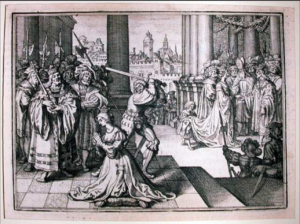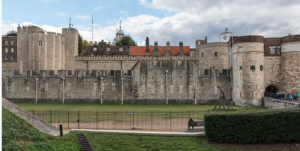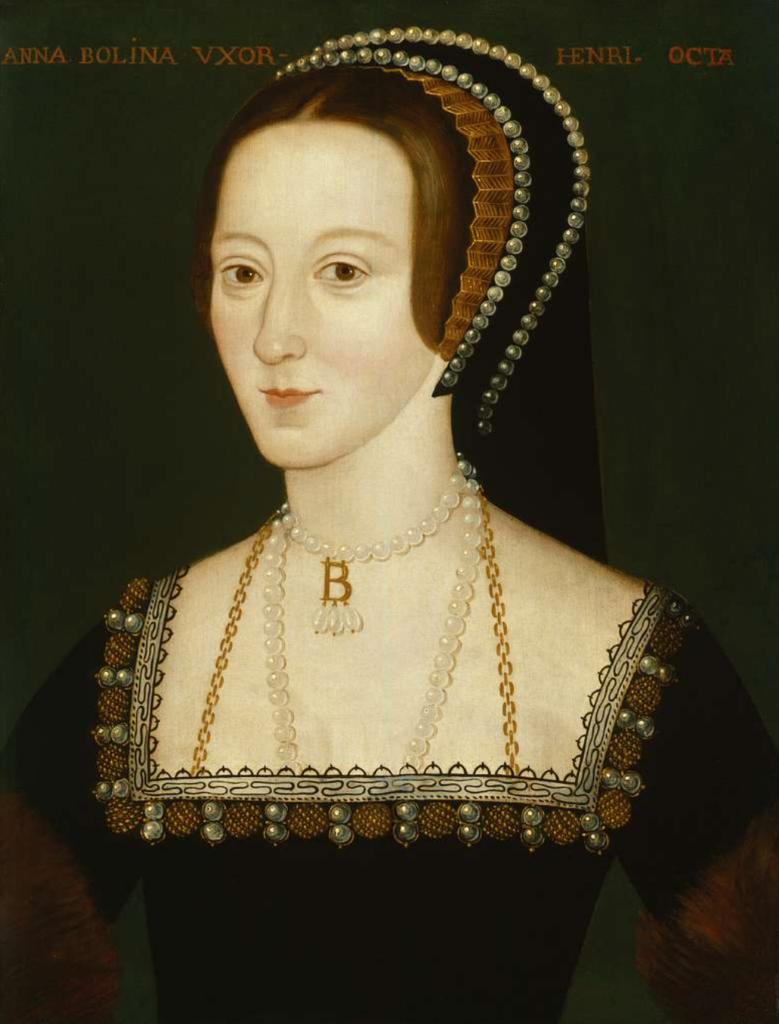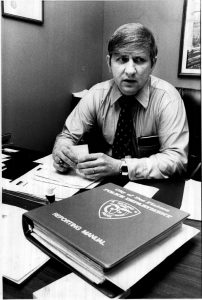As May of 1536 approached Tudor England, Anne Boleyn—a woman driven by ambition—aimed to secure status for herself and her family within the English Court. Anne grappled with a deteriorating marriage to King Henry VIII after she failed to fulfill Henry’s expectations of her giving him a male heir to be the next King of England. At this time, Anne also struggled with the religious shifts taking place in her country. She was not liked by many Catholics since she influenced Henry to break ties with the Roman Catholic Church. After Pope Clement VII denied Henry an annulment of his marriage to his first wife Catherine of Aragon so he could marry Anne, the English parliament passed the Act of Supremacy in 1534 which recognized the King as the Supreme Head of the Church in England. Monasteries were closed and anyone who opposed this reform was imprisoned or killed.1 And finally, an unjust trial was conducted, clearly designed to work against her.2 Despite facing numerous challenges and adversities, she persevered to improve her situation. Anne found herself wrongfully accused of adultery with multiple men, including her brother, George Boleyn, and with her alleged lovers: Mark Smeaton, Sir Henry Norris, Sir Francis Weston, and William Brereton. Additionally, she faced charges of High Treason, alleging that she plotted the King’s murder.3 Anne’s determination and intelligence served as her main pillars of strength as she fought for her family’s security, status, and personal power. These desires drove her to prove her innocence to the court even when she knew the whole trial was a conspiracy against her, but she did not give up. She claimed her innocence.
It was the early morning of May 2, 1536. Anne rested in her chamber in Greenwich, unaware of what had been going on behind her back. The people she trusted most had turned against her. Anne was no longer in what was once a loving marriage with King Henry VIII, and therefore she was no longer in good standing in the judging eyes of the court. Seeing that the marriage was falling apart, members of the court didn’t hesitate to spread rumors about Anne. They claimed that she had an incestuous relationship with her brother George Boleyn, apart from also committing adultery with four other men. The King had already found another young woman to pursue in hopes of having a male heir: Jane Seymour was one of Anne’s ladies-in-waiting. The King had to quickly find a way to get rid of Anne to be able to marry Jane. After all, Henry had experience with getting rid of his wives; he had done it before with his first wife Catherine of Aragon. After Henry was declared Supreme Head of the Church in England, he was able to marry Anne, the woman whom he once claimed he couldn’t live without but who had broken her promise of conceiving a male heir for Henry’s throne.4 The rumors of Anne’s alleged infidelity and plotting for his death finally reached King Henry’s ears. There, along with his chief secretary Thomas Cromwell, they saw the perfect opportunity to conspire against Anne. It was perfect timing for Henry to move Anne out of his way. Henry quickly ordered the arrest of the five men he was told Anne was having affairs with, despite there being no evidence to back up such claims. George Boleyn, Mark Smeaton, Sir Henry Norris, Sir Francis Weston, and William Brereton were arrested under the King’s order. The men were questioned upon their arrest, and then they were tortured to try to get a confession out of them, but they kept denying any involvement with the Queen. Only one of the men signed a false confession, Mark Smeaton, after his arrest. Smeaton was tortured and questioned for hours until he couldn’t take it anymore. In his desperation, Smeaton signed a false confession where he affirmed Anne’s guilt. Now it was Anne’s turn. Henry disappeared from the public eye.5

On that morning of May 2, Anne’s uncle, Thomas Howard, who was the third Duke of Norfolk, and Thomas Cromwell rushed into Anne’s chamber in the Greenwich Palace, claiming that the King commanded her to be conducted to the Tower of London. They looked at her with accusing eyes. Anne, in a self-controlled manner, said to them, “If it be His Majesty’s pleasure, I am ready to obey.” With no idea or explanation as to what was going on, Anne was taken from Greenwich Palace to the Tower of London in a barge, passing through a water gate in St. Thomas’ Tower, now known as “Traitors Gate.” She couldn’t have imagined that she was living her last moments of freedom. That was the beginning of the end for Queen Anne Boleyn. Throughout the journey, Howard and Cromwell repeatedly questioned Anne in a very aggressive and disrespectful manner. They broke the news to Anne: she was accused of a number of sexual crimes and treasonous acts. As they questioned her, she defended her innocence. Anne managed to keep her composure on the way to the Tower from Greenwich to London. Upon arriving at the Tower of London, at the Court Gate, the man who was in charge of the tower, William Kingston, received her. After getting off the barge, Anne finally lost her long-held composure and fell to her knees. She again reclaimed her innocence as she begged to see the King. She picked herself up, and Kingston walked her to the royal apartments, where just three and a half years before, she had spent the night before her coronation.6
Now she was there facing the shocking news and the uncertainty of her future. Kingston reported to Cromwell what had happened upon the Queen’s arrival: “Master Kingston, shall I go into a dungeon?” “No, Madam, you shall go into your lodging that you lay in at your coronation.” “It is too good for me. Jesu, have mercy on me!”7 Anne was placed in the room along with three ladies whose task was to spend their day and night noting every word she said. These women were unsympathetic towards Anne; they didn’t show any pity. They also continuously interrogated her to try to get a confession or some incriminating information out of her. These ladies reported that the Queen alternated between laughing and crying, and she would also ramble on and on about what had led her to be in such a position. During her rants, she mentioned Francis Weston, her brother George, Mark Smeaton, and Henry Norris multiple times; the fact that she spoke of these men was used as evidence against her even though she never said anything about her having a relationship with any of them.8
It was finally the day of the awaited trial, May 9, 1536. Anne was tried for adultery, but that was not the greatest charge she faced; she was also judged for treason. The Queen had allegedly “many times promised to marry one of her lovers, once the king died and often said that the king never had her heart.”9 Anne admitted that she had wondered what would happen if the king died, which according to the original Treason Law of 1352, “imagining the king’s death was treason.”10 They claimed that Anne and the plotters of the plan to murder the King by poisoning him met on October 30, 1535, and again on January 8, 1536, to discuss the plan; killing the king would allow Anne to marry one of her reported lovers, but this, of course, was not true, and again, like all of the past accusations, was made up. The punishment for high treason was beheading or burning; it was up to the king to decide.11 To make up high treason claims against Anne was the perfect way for Henry to be able to get rid of Anne quickly, and if she was dead, then he could immediately marry Jane. The moment that Anne stepped into the court, she knew her fate was sealed, she knew she had no escape, and this was the end for her. The jury was carefully arranged by Henry, full of people whom he hand-picked. Most of these men were Henry’s friends, and felons who wanted to escape their sentences, and supporters of Lady Mary, and loyal servants to the king. He knew these people would blindly obey him, even if it meant they had to give a wrongful verdict. Twenty-six men were chosen. Henry was not present at the trial.12
“Anne, Queen of England, come into court!” the usher shouted as Anne walked into the courtroom. She knew what she was walking into. She knew that her fate was sealed. She knew she was defenseless, with no help or support from anyone in the room. Anne walked in wearing a black velvet gown and a cap decorated with black and white feathers, and she was wearing her crown. Anne faced the judges with dignity and elegance, with no sight of fear, impatience, or cowardice. She was just pure composure. She was followed by Lady Boleyn and Lady Kingston, and Anne walked behind the Gaoler of the tower carrying a ceremonial axe, the blade of the axe facing away from Anne, signifying that she hadn’t been convicted.13 Anne approached her seat, which was in the middle of the room surrounded by 2,000 attendees. She did a curtsy to the judges. There was a chair placed on a raised platform in the center of the room. Anne took her seat with her admirable composure.14 Her charges were then read, accusing Anne of incest, adultery, and high treason. She sat patiently listening to all of the lies that had been made up to condemn her. Anne slowly raised her fragile hand and said “Not Guilty” to all charges. She then listened to Sir Christopher Hales, the Crown’s attorney general who was pleading the Crown’s case, again throwing around the carefully crafted lies that were about to end her. The prosecution did not call a single witness to the stand; they failed to show any kind of evidence other than hearsay, and a simple majority vote was enough to condemn the Queen as guilty. Even though she was not allowed to have a defense council or even an advisor, Anne summoned her inner strength as she answered every single question the judges threw at her with astonishing confidence and intelligence.15 Reports say that she “Made so wise and discreet answers to all things laid against her, excusing herself with her words clearly, as though she had never been guilty of the same, she positively denied that she had ever been false to the King…”16 But her efforts were useless, she was fighting a losing battle. The judges did not even take a moment to deliberate their decision. As soon as Anne was done talking, her uncle, the Duke of Norfolk annunciated the jury’s unanimous verdict.17 Anne was found guilty of all charges.
Anne was then asked to remove her crown, and she did, never showing any sign of weakness even now that she had been found wrongly guilty of all of the fabricated stories against her. She did not cry; she did not show anger; she just obeyed. At that moment, Anne Boleyn was no longer the Queen of England. But that was not the worst news Anne was about to receive; her sentence was about to be read to her.”Because thou hast offended against our sovereign the King’s Grace in committing treason against his person, and here attainted of the same, the law of the realm is this, that thou hast deserved death, and thy judgment is this: that thou shalt be burned here within the Tower of London on the Green, else to have thy head smitten off, as the King’s pleasure shall be further known of the same.”18 It was the end, and Anne had no escape. Henry got what he wanted one more time, and Anne’s innocent life was going to carry the weight of Henry’s actions. At that moment, Anne was left wondering how she was going to die; she didn’t know if she was going to be burned at the stake, which was the customary punishment for female traitors, or if she was going to be beheaded, as it was up to the King to decide.19
After her sentence was read, Anne looked up to the ceiling as she said “O Father! O Creator, Thou who art the way, the life, and the truth, knowest whether I deserve this death!”20 Then she faced the judges and said:
“My lords, I will not say your sentence is unjust, nor presume that my reasons can prevail against your convictions. I am willing to believe that you have sufficient reasons for what you have done; but then they must be other than those which have been produced in court, for I am clear of all the offences which you then laid to my charge. I have ever been a faithful wife to the King, though I do not say I have always shown him that humility which his goodness to me, and the honours to which he raised me, merited. I confess I have had jealous fancies and suspicions of him, which I had not discretion enough, and wisdom, to conceal at all times. But God knows, and is my witness, that I have not sinned against him in any other way. Think not I say this in the hope to prolong my life, for He who saveth from death hath taught me how to die, and He will strengthen my faith. Think not, however, that I am so bewildered in my mind as not to lay the honour of my chastity to heart now in mine extremity, when I have maintained it all my life long, much as ever queen did. I know these, my last words, will avail me nothing but for the justification of my chastity and honour. As for my brother and those others who are unjustly condemned, I would willingly suffer many deaths to deliver them, but since I see it so pleases the King, I shall willingly accompany them in death, with this assurance, that I shall lead an endless life with them in peace and joy, where I will pray to God for the King and for you, my lords.”21
Shen then stood, nodded her head to the judges, and left the courtroom, Willian Kingston followed her with an axe facing her to show she had been sentenced to death.22
Anne was then taken back to her room at the Tower. After she left, Henry was informed by the couriers that her trial was over. Henry then wrote and signed her death warrant on the day of May 16, 1536. In the warrant addressed to the Constable of the Tower of London, Henry detailed how he wanted Anne to be executed, down to the very last detail. Henry stated that Anne was to be executed on May 19, 1536, on Tower Green. Henry explained that he was moved by pity for the woman whom he once was in love with, so he decided she shouldn’t be burned, but instead, he was going to spare her from a slow, painful death, and declared that instead, her head should be “cut-off.”23, which meant that it should be done with a sword instead of an axe. This was not customary in England. Beheading by a sword was a more reliable form of execution since it was faster, cleaner, and less painful than using an axe. After declaring his orders, Henry sent Cromwell to Calais for a swordsman.24 Henry also stated that all foreigners were to be excluded from witnessing the Queen’s beheading.25
May 18, 1536, the night before her execution, Anne was ready to die. She was calm and even seemed happy that her moment had arrived. There is no doubt that at this point, Anne was done with everything. She had been falsely accused of the worst crimes, she had no one, and she had lost everything that she could’ve cared about. She lost her brother, her father who gave her a cold shoulder, her status, her marriage, and her reputation. Her daughter had been marked as a bastard and five men had died because of her, and she recently went through the pain of a miscarriage. In her mind, Anne had nothing to live for anymore; there was nothing she could do or say to get back to her old life. Anne received her sacrament that same day, and after the ritual was done, she called Kingston and he entered. On a report to Cromwell, Kingston shared a conversation he had with Anne at that moment: “And at my coming, she said, ‘Master Kingston, I hear say I shall not die afore noon, and I am very sorry therefore, for I thought then to be dead and past my pain.’ I told her it should be no pain, it was so subtle; and then she said, ‘I have heard say the executioner was very good, and I have a little neck.’ And she put her hand about it, laughing heartily.(…) I have seen many men and also women executed, and all they have been in great sorrow, but to my knowledge, this lady has much joy and pleasure in death.”26 She was just waiting for it, she had nothing but her strength and faith to hold her.
While his ex-wife was waiting for her execution, Henry was arranging his wedding with Jane Seymour. Eustace Chapuys, a minor bishop of the Holy Roman Empire who was close to the King, wrote that the King was happier than ever, “His Majesty has been gayer since the arrest than ever before. He is going out to dinner here, there, and everywhere with the ladies. Sometimes he returns along the river after midnight to the sound of many instruments or the voices of the singers of his chamber, who do their utmost to interpret his delight at being rid of that thin old woman.”27 He clearly couldn’t care less about what was about to happen to Anne.

May 19, 1536 finally arrived, the day that Anne Boleyn, Queen of England for only three years, the second wife of King Henry VIII, mother of the future Queen Elizabeth I, was to die only ten days after her messy and unfair trial and only three days after her death warrant was signed. Somehow the people found out where the execution was going to take place, so that by noon a good crowd of at least 1000 spectators had gathered at the tower.28 Before noon, the ladies that had been accompanying Anne through this process, stood at the end of the scaffold. A few minutes later, Kingston led Anne towards the scaffold; she was wearing a black damask and a small hat. She held her head up high, and she didn’t look scared or sad; she was prepared to die. Kingston then helped her up the platform where the executioner awaited holding an amusing clean sword. The crowd looked at her and she looked at them. Cromwell and the Duke of Suffolk were there too. The crowd was silenced and Anne prepared to address the crowd with a speech, “I am come, not to accuse my enemies, but to die.”29 Then she looked at Kingston, who was in charge of giving the executioner the signal to execute, and said: “Sir, do not hasten the signal for my death until I have spoken what is on my mind to say.”30 She turned again to the audience. “Good Christian people, I am come hither to die according to law, for by law I am judged to die and therefore I speak nothing against it. I am come hither to accuse no man nor to speak anything of what I am accused. I know full well that anything I might say in my defense does not appertain to you, but I come here only to die and thus yield myself to the will of my lord, the King, I ask God to send the King long life. And thus I take leave of the world and you. I heartily desire you all to pray for me.”31She said this while taking off her hat, taking off her collar, and putting on a linen cap on her hair. “Alas, poor head, In a brief space you will roll on the dust of the scaffold. As in life you did not deserve to wear the crown of a queen, so in death, you deserve no better doom than this.”32 She then turned to her ladies, and told them: “Do not forget me. Always be faithful to the King’s grace and to her whom with happier fortune you may have as your queen and mistress. Esteem your honor above life, and in your prayers to the Lord Jesus forget not to pray for my soul.”33 She finally kneeled and said her last words: “Oh, Lord Jesu, have pity on my soul.”34
The executioner moved next to her, and she looked at him with her hypnotizing eyes. He couldn’t kill her while looking at those eyes. He waved as his assistant moved from the opposite side to her, and she turned around to look at the assistant, and in that short second, he swung his sword up and it descended on the Queen’s neck, beheading her with a single clean and strong blow.35 The crowd was shocked, some of them fainted, others cried, and others just screamed. It was an extremely gruesome image. They quickly covered Anne’s body with a white cloth and tossed the head into an elmwood chest that had been previously used to store bows. The canons of the Tower were fired to annunciate that the Queen had died.36
The ladies took care of her body and the chest. They quickly took it to the chapel at the Tower, which was the royal chapel of St.Peter, and they did not let any man touch her. The ladies took off her bloodstained garments and jewelry. It was customary for the officials in the tower to get the garments of those who had been beheaded to the officers in the tower, so they did this with Anne’s things too. Eventually, Henry got back those things as he didn’t want anyone to keep any mementos of his ex-wife.37 Anne’s body was buried beside her brother’s at the Chapel of St Peter ad Vincula in the Tower in an unmarked grave. Anne was buried as a traitor to the Crown with no proper Christian burial service.38
Ten days after Anne’s death, on May 30, 1536, Henry married Jane Seymour at the Whitehall Palace. He then got the male heir that he so desperately longed for, Edward VI. Jane then died a few days after her son was born. Henry went on to have three more wives after Jane’s passing.39 Anne’s and George’s father lost his title of Lord Privy of the Seal and died later. Anne was then erased from history books during the rest of Henry’s reign. Her badges and titles were replaced by Jane’s. Mary I, the daughter of Catherine of Aragon then helped destroy Anne’s reputation even more. She said that Anne had destroyed her mother and corrupted England away from Roman Catholicism. Anne’s daughter Elizabeth then went on to be one of the greatest rulers England ever had, which helped restore Anne’s reputation. Some portraits of her were created. Anne was seen as a religious reformer, but the question of whether she was guilty or not still lingered in the court and in the country as a whole.40

Anne’s execution shocked England. Anne Boleyn sustains her position as one of the most important Queens of England. Her story continues to captivate historians and her execution and trial continue to spark debates on the abuse of power, gender bias, and political corruption. Many hated her and many loved her, but at the end of the day, it is undeniable that she is one of the most well-known historical figures of the Tudor Renaissance. Every year the Tower of London, where Anne was imprisoned and executed, attracts three-million visitors each year.41 Anne still fascinates us today. She has inspired many works of literature both fiction and non-fiction, and she has also been the source of inspiration for many films and TV series like “The Other Boleyn Girl” (2008). Her story has resurfaced as the play “Six: The Musical” by Lucy Moss and Toby Marlow, which tells the stories of the six wives of King Henry VIII has gained a huge following, and Anne Boleyn is a fan favorite in the musical. It is clear that her reputation has been redeemed. She is now seen as what she really is, a victim of sexism and a victim of Henry VIII. She was innocent. Her only true crime was not having a son, and therefore not pleasing the King. She died a sad death and she is now being mourned as she keeps gaining the recognition that she has always deserved. The date May 19, 1536 stands as a reminder of a flawed justice system and the tragic fate of a Queen who faced a rigged trial. Anne’s legacy endures challenging historical narratives and demands a more comprehensive understanding of Tudor history.
- Susan Doran, “Henry VIII and the Reformation,” The British Library (website), September 23, 2019, https://www.bl.uk/sacred-texts/articles/henry-viii-and-the-reformation. ↵
- Dalya Alberge, “Chilling Find Shows How Henry VIII Planned Every Detail of Boleyn Beheading,” The Guardian, October 25, 2020, sec. UK news, https://www.theguardian.com/uk-news/2020/oct/25/chilling-find-shows-how-henry-viii-planned-every-detail-of-boleyn-beheading. ↵
- Gladys Malvern, The Six Wives of Henry VIII (New York: Open Road Integrated Media, Inc., 2016), 43-49. ↵
- Susan Doran, “Henry VIII and the Reformation,” The British Library (website), September 23, 2019, https://www.bl.uk/sacred-texts/articles/henry-viii-and-the-reformation. ↵
- E. W. Ives, The Life and Death of Anne Boleyn (Blackwell Pub., 2004), 341-347, http://archive.org/details/lifedeathofanneb00ives. ; Gladys Malvern, The Six Wives of Henry VIII (New York: Open Road Integrated Media, Inc., 2016), 43-49. ↵
- E. W. Ives, The Life and Death of Anne Boleyn (Blackwell Pub., 2004),334, http://archive.org/details/lifedeathofanneb00ives ; Gladys Malvern, The Six Wives of Henry VIII (New York: Open Road Integrated Media, Inc., 2016), 43-44. ↵
- E. W. Ives, The Life and Death of Anne Boleyn (Blackwell Pub., 2004), 344, http://archive.org/details/lifedeathofanneb00ives. ↵
- E. W. Ives, The Life and Death of Anne Boleyn (Blackwell Pub., 2004), 346, http://archive.org/details/lifedeathofanneb00ives. ↵
- E. W. Ives, The Life and Death of Anne Boleyn (Blackwell Pub., 2004), 345, http://archive.org/details/lifedeathofanneb00ives. ↵
- E. W. Ives, The Life and Death of Anne Boleyn (Blackwell Pub., 2004), 346 http://archive.org/details/lifedeathofanneb00ives. ↵
- Dalya Alberge, “Chilling Find Shows How Henry VIII Planned Every Detail of Boleyn Beheading,” The Guardian, October 25, 2020, sec. UK news, https://www.theguardian.com/uk-news/2020/oct/25/chilling-find-shows-how-henry-viii-planned-every-detail-of-boleyn-beheading. ↵
- Claire Ridgway, The Fall of Anne Boleyn: A Countdown, Second edition (MadeGlobal Publishing, 2015), 110-111. ↵
- Alison Weir, The Lady in the Tower: The Fall of Anne Boleyn, 1st ed (New York: Ballantine Books, 2010), 202. ↵
- Claire Ridgway, The Fall of Anne Boleyn: A Countdown, Second edition (MadeGlobal Publishing, 2015), 110. ↵
- Alison Weir, The Lady in the Tower: The Fall of Anne Boleyn, 1st ed (New York: Ballantine Books, 2010),203. ↵
- Alison Weir, The Lady in the Tower: The Fall of Anne Boleyn, 1st ed (New York: Ballantine Books, 2010),203. ↵
- Claire Ridgway, The Fall of Anne Boleyn: A Countdown, Second edition (MadeGlobal Publishing, 2015), 111. ↵
- E. W. Ives, The Life and Death of Anne Boleyn (Blackwell Pub., 2004), 341, http://archive.org/details/lifedeathofanneb00ives. ↵
- Gladys Malvern, The Six Wives of Henry VIII (New York: Open Road Integrated Media, Inc., 2016), 46, http://ebookcentral.proquest.com/lib/stmarytx-ebooks/detail.action?docID=4198236. ↵
- Gladys Malvern, The Six Wives of Henry VIII (New York: Open Road Integrated Media, Inc., 2016), 46, http://ebookcentral.proquest.com/lib/stmarytx-ebooks/detail.action?docID=4198236. ↵
- Gladys Malvern, The Six Wives of Henry VIII (New York: Open Road Integrated Media, Inc., 2016), 46-47,http://ebookcentral.proquest.com/lib/stmarytx-ebooks/detail.action?docID=4198236. ↵
- Claire Ridgway, The Fall of Anne Boleyn: A Countdown, Second edition (MadeGlobal Publishing, 2015), 112. ↵
- Dalya Alberge, “Chilling Find Shows How Henry VIII Planned Every Detail of Boleyn Beheading,” The Guardian, October 25, 2020, sec. UK news, https://www.theguardian.com/uk-news/2020/oct/25/chilling-find-shows-how-henry-viii-planned-every-detail-of-boleyn-beheading. ↵
- Dalya Alberge, “Chilling Find Shows How Henry VIII Planned Every Detail of Boleyn Beheading,” The Guardian, October 25, 2020, sec. UK news, https://www.theguardian.com/uk-news/2020/oct/25/chilling-find-shows-how-henry-viii-planned-every-detail-of-boleyn-beheading. ↵
- Gladys Malvern, The Six Wives of Henry VIII (New York: Open Road Integrated Media, Inc., 2016), 48. ↵
- Alison Weir, The Lady in the Tower: The Fall of Anne Boleyn, 1st ed (New York: Ballantine Books, 2010), 231. ↵
- Alison Weir, The Lady in the Tower: The Fall of Anne Boleyn, 1st ed (New York: Ballantine Books, 2010), 233. ↵
- Alison Weir, The Lady in the Tower: The Fall of Anne Boleyn, 1st ed (New York: Ballantine Books, 2010), 232. ↵
- Gladys Malvern, The Six Wives of Henry VIII (New York: Open Road Integrated Media, Inc., 2016), 49 ↵
- Gladys Malvern, The Six Wives of Henry VIII (New York: Open Road Integrated Media, Inc., 2016), 49. ↵
- Gladys Malvern, The Six Wives of Henry VIII (New York: Open Road Integrated Media, Inc., 2016), 49. ↵
- Gladys Malvern, The Six Wives of Henry VIII (New York: Open Road Integrated Media, Inc., 2016), 49. ↵
- Gladys Malvern, The Six Wives of Henry VIII (New York: Open Road Integrated Media, Inc., 2016), 49. ↵
- Gladys Malvern, The Six Wives of Henry VIII (New York: Open Road Integrated Media, Inc., 2016), 49. ↵
- Gladys Malvern, The Six Wives of Henry VIII (New York: Open Road Integrated Media, Inc., 2016), 43-49. ↵
- Alison Weir, The Lady in the Tower: The Fall of Anne Boleyn, 1st ed (New York: Ballantine Books, 2010), 245-249. ↵
- Alison Weir, The Lady in the Tower: The Fall of Anne Boleyn, 1st ed (New York: Ballantine Books, 2010), 245. ↵
- Claire Ridgway, The Fall of Anne Boleyn: A Countdown, Second edition (MadeGlobal Publishing, 2015), 6-7. ↵
- Claire Ridgway, The Fall of Anne Boleyn: A Countdown, Second edition (MadeGlobal Publishing, 2015), 129. ↵
- Hayley Nolan, Anne Boleyn: 500 Years of Lies (Little A, 2019), 108. ↵
- “The Story of the Tower of London,” Historic Royal Palaces, accessed October 19, 2023, https://www.hrp.org.uk/tower-of-london/history-and-stories/the-story-of-the-tower-of-london/. ↵



